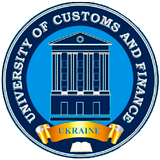EXPLORING THE POTENTIAL OF UNITY FOR INTEGRATING GEOSPATIAL DATA IN 3D LANDSCAPE MODELING
Abstract
This article explores the potential of the Unity platform for integrating geospatial data into the process of 3D landscape modeling. The study specifically focuses on the creation of realistic 3D landscape models using open-source geospatial data such as OpenStreetMap and MapBox. The research analyzes the main methods of integrating geospatial data into the Unity environment, identifies the advantages and disadvantages of different approaches, and examines the role of operating systems in supporting this process. To achieve the objectives of the study, several key tasks were undertaken: the selection and preliminary processing of geospatial data from open sources, the adaptation of these data to Unity specifications through processes such as data conversion and the normalization of elevation values, and the integration of the data into Unity using specialized tools like Terrain Tools and Mapbox SDK. The study emphasizes the importance of optimizing these processes to ensure that Unity operates efficiently, even when handling large datasets. Particular attention was given to the methods used for data processing and visualization to achieve high performance. Techniques such as Level of Detail (LOD) management, texture compression, and material optimization were employed, enabling Unity to maintain stable operation even on systems with limited resources. The research further explores how different operating systems can impact the performance and integration capabilities of Unity when managing large datasets. It was found that while Unity’s flexibility and robust toolset allow for effective geospatial data integration, the efficiency of the overall modeling process is significantly influenced by the performance of the operating system and the optimization of Unity’s settings for specific use cases. These findings highlight the necessity of carefully selecting both the software environment and the data processing methods to maximize the platform’s capabilities. The results demonstrate that Unity is a powerful tool for 3D visualization, providing flexibility and support for various data formats, enabling the creation of realistic and detailed landscape models Beyond its application in traditional fields such as architecture, urban planning, and geodesy, the study reveals that the optimized models can also be effectively used in developing immersive virtual environments for educational and training purposes. Such environments can leverage real geospatial data to provide users with a more authentic experience, which is particularly valuable in fields like disaster management, military training, and environmental simulation. Additionally, the study suggests that the methods developed could be applied in the creation of interactive applications that require the integration of real-world geographic data. The practical significance of the findings extends to various industries, including not only architecture, urban planning, and geodesy, but also the entertainment industry, particularly in game development and virtual reality applications where high performance and realism are critical. The study’s conclusions provide a solid foundation for future research aimed at optimizing the processes of data integration and enhancing the functionality of Unity for handling a wider range of geospatial data sources. Future research could also explore the potential of integrating real-time data streams into Unity models, allowing for dynamic updates to landscapes based on current environmental conditions or other changing variables. This approach could significantly enhance the realism and practical applicability of 3D models in various real-world scenarios, making Unity an even more valuable tool across different sectors.
References
2. Іванов П., Білий К. Можливості використання ГІС для 3D-візуалізації ландшафті. Геодезичний вісник. 2019. № 5. С. 45-52.
3. Грехем Л. Використання Unity для інтеграції геопросторових даних у 3D-моделюванні ландшафтів. Журнал комп’ютерних наук. 2021. № 7. С. 34-41.
4. Петров М., Сидоренко О. Продуктивність Unity при роботі з великими обсягами геопросторових даних. Комп’ютерні технології та системи. 2020. № 6. С. 58-65.
5. Браун С. Оптимізація візуалізації ландшафтів у Unity: нові підходи. Журнал цифрових технологій. 2021. № 8. С. 27-33.
6. OpenStreetMap. Available at: https://www.openstreetmap.org/
7. GeoJSON Format Specification. Available at: https://geojson.org/
8. Mapbox SDK for Unity. Available at: https://www.mapbox.com/unity-sdk/
9. Documentation for Converting Data into GeoJSON. Available at: https://docs.openstreetmap.org/help/how-to/convert-into-geojson
10. Unity Terrain Tools Documentation. Available at: https://docs.unity3d.com/Packages/com.unity.terraintools@4.0/manual/index.html
11. Unity LOD (Level of Detail) Documentation. Available at: https://docs.unity3d.com/Manual/class-LODGroup.html

 ISSN
ISSN 




